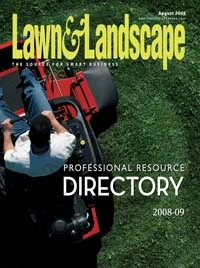McDonalds may have a great deal on Big Macs, perhaps even below cost, but something has to pay for the rent, advertising, salaries and insurance. If the Golden Arches loses money on the burger you can be sure they made up for it on the soda, fries or something else. Is it bad to make a profit on fries? No, because the public is going to pay the cost of running the business.
Remember, the consumer doesn’t pay for some of the cost, he pays for all of the costs. And your business is no different. Your customer has to pay your costs of doing business. They don’t just pay for the labor and materials, they have to pay for the rent, utilities, insurance, loans, advertising and vehicles. The hardest part of determining what your hourly rate must be to cover your cost of doing business is to determine what the real cost of doing business is from a cash flow perspective. Yes, there is a difference in cash flow and accounting. Accounting tends to work with paper dollars while cash flow works with the real dollars that flow in and out of your company. You want to determine what your hourly rate needs to be to cover all your real costs of doing business while generating a reasonable profit. I don’t mean a profit on paper, but rather a profit in terms of having money left in your checking account.
Next to the cost of non-billable time, equipment replacement cost is normally a landscape contractor’s second highest cost of doing business. Remember, we are looking at all costs from a cash flow perspective. Equipment replacement cost take the place of depreciation and will be significantly higher than depreciation.
Depreciation deals with what was paid for a piece of equipment several years ago when it was purchased. Equipment replacement cost, however, deals with what it will cost to replace that equipment in the future and then builds the “future cost” into today’s pricing. The objective is to have enough money built into your hourly rate so when it comes time to replace equipment the company has sufficient funds to pay cash for it.
Want to know if your hourly rate is covering your equipment replacement costs? Ask yourself this question: “How did you pay for your last vehicle?” If you had to get a loan then chances are the replacement cost was not built into your hourly rate. If you paid cash, then congratulations.
How do we calculate the cost of equipment replacement? Easy, look at each piece of equipment and ask yourself how many more years it is expected to last before you need to replace it. Let’s say your 2007 truck will last three more years. Next, what will be the net out-of pocket-cost to replace your truck three years from today? Let’s say it will cost $25,000 to buy a new truck three years from today and you get a trade-in allowance of $4,000 on your old truck. That means your out-of-pocket cost is $21,000. Now $21,000 divided by the three years remaining tells you $7,000 a year needs to be put into your “cost of doing business” and therefore into your hourly rate.
Now create a worksheet to calculate the total annual replacement costs for a vehicle. First, list your current vehicles on the left side. Next to it, estimate how many years each will last before they need to be replaced. Now take the net replacement cost and divide it by the remaining years. The result will be your average annual replacement cost for that vehicle.
Now list all of your equipment and then total all the annual costs and come up with the total annual equipment replacement cost for the coming year. That total cost will become one item in your company’s overhead costs later on. From an accounting standpoint, most of us have been told we will replace our equipment out of the “profits” of the company.
Now for the reality check. Total your equipment replacement costs and ask yourself, “Did we make that much profit last year and still have lots left over?”
The truth is that the average company doesn’t generate enough profit to cover the cost of replacing equipment, much less have a significant amount left over. If you don’t build your equipment replacement costs into your hourly rate, then they won’t get covered. LL

Explore the August 2008 Issue
Check out more from this issue and find your next story to read.





